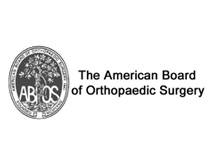Femoral Osteotomy
Hip Anatomy
The hip is a ball and socket joint with the ball being formed by the head of the femur (thigh bone) and the pelvic bone forming the socket (acetabulum). The correct alignment of the femur in relation to the pelvic bone plays an important role in the proper functioning and health of the joint. Fractures, non-union of treated fractures or deformities may result in an improper relationship between these structures, leading to wear and tear (arthritis) and pain at the joint, and gait deformities.
What is Femoral Osteotomy?
A femoral osteotomy is a surgical procedure that involves reshaping the upper part of the femur to realign it within the socket. The correction of the hip anatomy reduces the symptoms and progression of arthritis.
Before performing a femoral osteotomy, your doctor will conduct a physical examination and obtain appropriate imaging studies to identify the deformity and decide on the type of osteotomy.
Femoral Osteotomy Procedure
During the procedure, your doctor cuts the femur and realigns it correcting rotational or angular deformities. When displacement is severe, the femur may need to be shortened to prevent stress on the surrounding tissues. Metal pins, plates or rods are placed to stabilize the osteotomy site until it heals.
Risks and Complications of Femoral Osteotomy Procedure
As with all surgical procedures, femoral osteotomy may be associated with certain complications such as infection, nerve and blood vessel injury, inability to achieve complete correction and persistence of pain and non-union.










